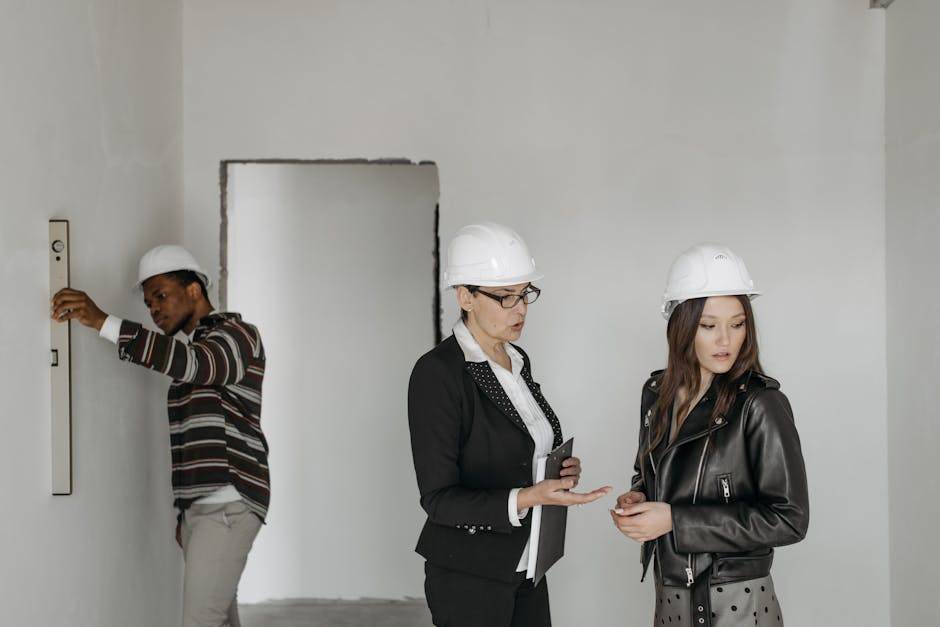Why the Architect-Client Relationship Defines Project Success
The architect and client bond is less a transaction and more a shared leap of faith. Clients entrust architects with money, time, and emotion while the finished product is still only an idea. A recent study in Procedia – Social and Behavioral Sciences calls this a “perceptual experience,” highlighting how different architecture is from most purchases where the buyer sees exactly what they get.
Five pillars keep that leap from turning into a fall:
- Trust – the non-negotiable foundation
- Clear communication – translating jargon into everyday language
- Transparency – open budgets, schedules, and scope changes
- Expectation management – explaining what’s realistic, what isn’t, and why
- Collaboration – treating clients as co-creators, not spectators
The Royal Institute of British Architects (RIBA) surveyed 500 clients and found a single unhappy customer can damage years of reputation building, while satisfied ones create the best marketing a firm could hope for. For ADU projects, where homeowners are often first-time builders facing strict California regulations, these pillars become even more critical.

1. Laying the Foundation: Understanding Needs and Building Trust
Early conversations set the tone for the entire architect and client journey. The goal is simple: learn what the client truly needs, then prove you can deliver it.
How to Truly Understand Your Client’s Vision
Think detective, not draftsman. Ask questions such as:
- Who will use the space day-to-day?
- How might those needs change in 5–10 years?
- What feelings should the building evoke?
- Which images, materials, or precedent projects resonate—and why?
Visual tools—Pinterest boards, quick sketches, VR mock-ups—help clients articulate ideas they can’t yet put into words. With ADUs we often find the “simple rental” is actually future multigenerational housing or an eventual aging-in-place suite. Unearthing that early prevents costly redesigns later.
The Role of Financial Transparency

Money talks, so tackle it head-on. Clarify design fees, city fees, construction costs, and a realistic contingency (10–20%). Put every scope change in writing—no surprises, no resentment. Homeowners appreciate candor more than optimistic numbers that later explode.
Why an Architect Must Be a Business Analyst
With services now making up more than 80 % of the U.S. economy, most clients—commercial or residential—care about return on investment. For an ADU owner that might mean cash-flow projections; for a café it’s seat-count versus rent. By speaking in ROI terms you shift from “designer” to indispensable advisor, exactly the positioning ADU Marketing Pros helps firms broadcast online.
2. The Modern Architect and Client Relationship: Communication and Technology
Clear, predictable communication beats brilliant design delivered in the dark. Modern tools make that easier than ever.
Mastering Communication

Set a cadence—weekly emails or bi-weekly Zooms—so clients always know what’s next. Replace jargon with plain English; when jargon is unavoidable, define it. Design charrettes give clients a seat at the table, turning potential critics into invested partners.
Leveraging Technology for Engagement

3D models and VR walkthroughs turn abstract floor plans into lived experiences, cutting revision rounds and boosting confidence. AR overlays let homeowners “place” an ADU in their backyard before ground breaks, instantly answering scale and privacy questions.
Building a Digital Presence That Attracts the Right Clients
Most prospects vet firms online long before they call. A fast mobile site, clear portfolio, and authentic testimonials demonstrate competence and communication skills. Thought-leadership articles on permitting or cost breakdowns draw in clients who value expertise over lowest bid—exactly the niche ADU Marketing Pros serves.
Authoritative sources for further reading:
- Harvard Graduate School of Design on VR in architectural practice.
- Forbes Council on mobile-first web strategy.
3. Navigating the Project: Managing Expectations and Feedback
Smooth projects aren’t accident-free; they’re expectation-ready. From day one, explain the Standard of Care—architects provide professional judgment, not perfection.
Setting Realistic Expectations
Schematic Design is a conversation starter, not a final blueprint. Explain likely contingencies: hidden utility lines, soil surprises, or stricter plan-checker comments. Encourage clients to hold 10–20 % of the budget in reserve.
Turning Feedback into Progress
| If a client says… | Productive response |
|---|---|
| “The kitchen feels tight.” | Offer two layout tweaks with pros/cons and cost impact. |
| “I hate everything.” | Ask for three specifics they do like, then rebuild around them. |
Document every agreed change, timeline shift, and cost delta. Written clarity today saves reputation tomorrow.
The Client’s Role
Great clients:
- Make timely decisions.
- Share complete site and budget info.
- Give specific feedback, not blanket rejections.
- Trust professional advice while staying engaged.
Send these expectations in a welcome packet so everyone signs up for success.
Frequently Asked Questions about the Architect-Client Relationship
What is the single biggest success factor?
Trust. It’s earned through transparency, competence, and follow-through—answering emails promptly, explaining fees clearly, and doing what you say you’ll do.
How can architects help indecisive clients?
Do the homework first: clarify goals, budgets, and aesthetics, then present one well-researched option plus a fallback. Visual aids—mood boards or VR—turn fear of the unknown into firm decisions.
What are a client’s top responsibilities?
Provide a clear brief, make decisions on schedule, be honest about finances, and respect professional guidance. Shared responsibility = shared success.
Conclusion: Building a Legacy of Trust and Design Excellence
Strong architect and client partnerships outlast any single project. They generate referrals, strengthen portfolios, and position firms as trusted advisors rather than commodity vendors.
At ADU Marketing Pros in San Jose, we help architects showcase that partnership mindset online—attracting homeowners and developers who value expertise over price. Ready to grow with clients who get you?
- Call us today at (408) 555-0123
- Or explore our services: Architecture Lead Generation | Online Marketing for Architects
Invest in trust, communicate with clarity, and watch every project become a stepping-stone to the next.




